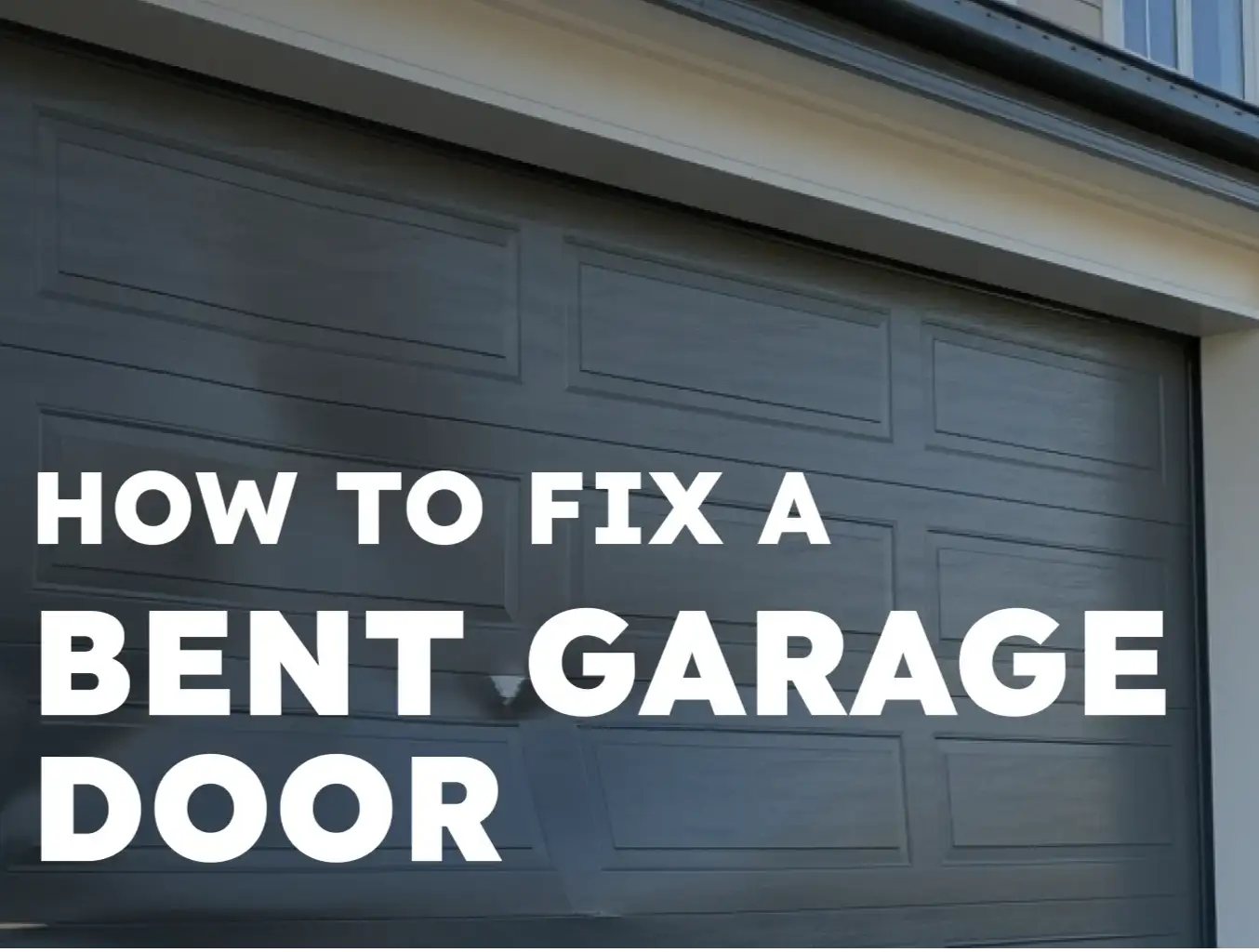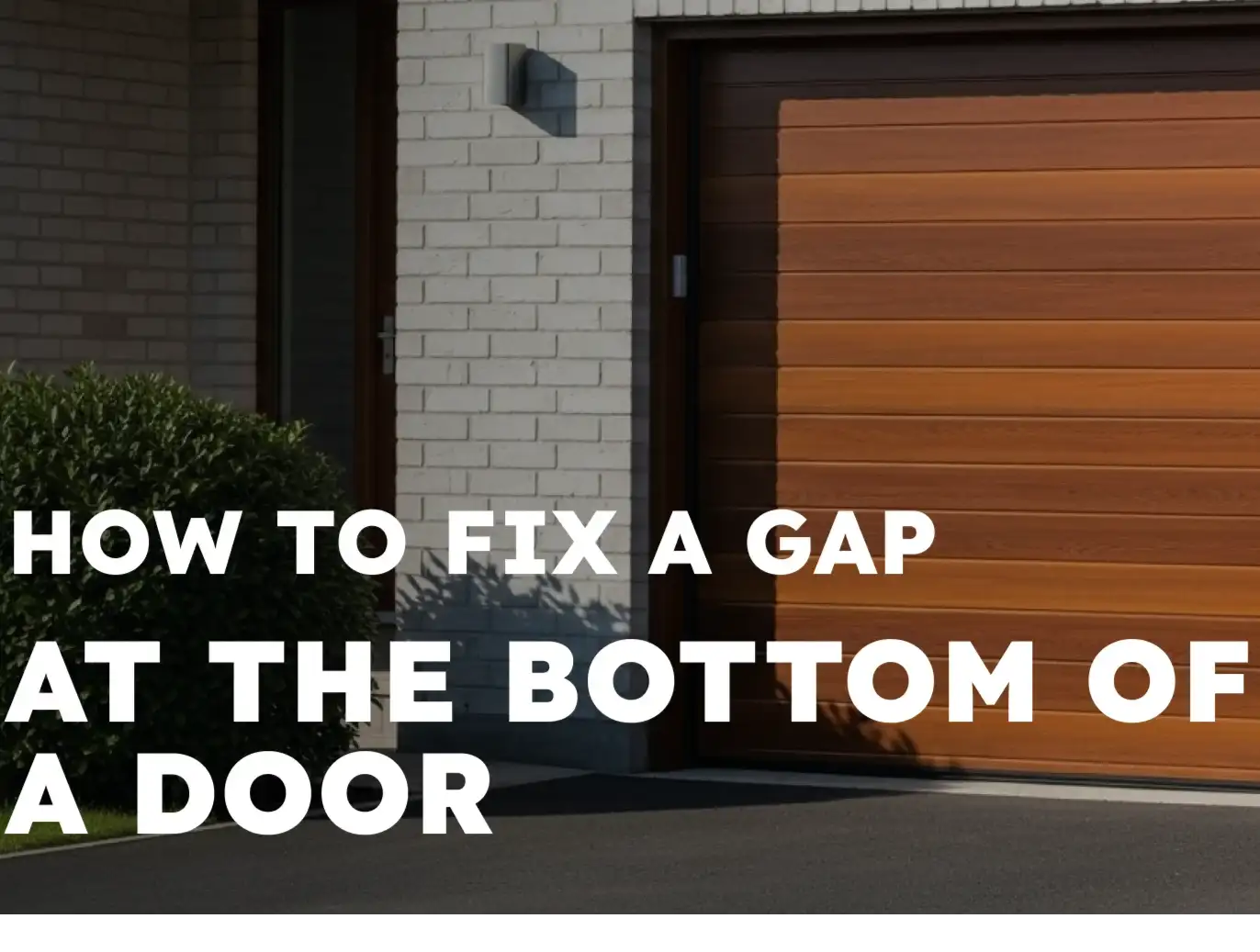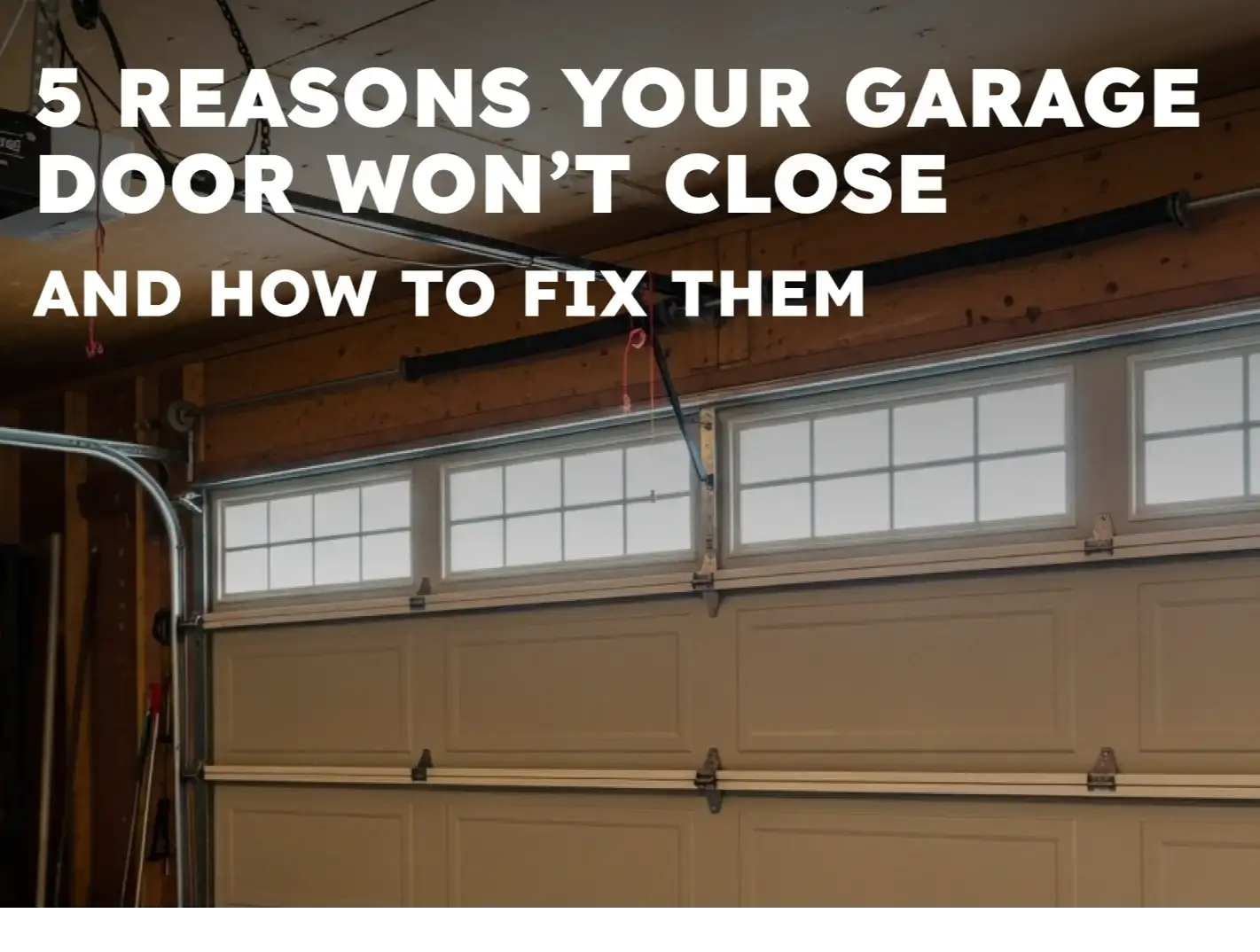How to Fix a Crooked Garage Door: A Professional Guide
Published: Nov 20, 2025
When your garage door runs crooked or shows an uneven garage door gap, it’s more than an eyesore — it’s a safety risk. The immediate, non-negotiable recommendation is simple: stop using the door. Continuing to use a lopsided or uneven garage door can quickly turn a fixable component issue into a complete system failure, often resulting in expensive panel damage. In this guide, Up & Down Garage Doors shows you how to fix a crooked garage door the safe way — what you can check in minutes and when to call a professional so the door closes smoothly and square again.
Uneven Garage Door: The Telltale Signs of Failure
An garage door uneven on the way up or down usually points to a problem in the lifting system — tracks, rollers, lift cables, or the spring set. Identifying the specific part that failed is essential before attempting any fix.
Here are the key signs your door is dangerously imbalanced:

- Lopsided opening. The door tilts or the garage door shifted to one side when opening or closing. One side may stop several inches above the floor, while the other side is fully seated, resulting in a tilted garage door.
- Track damage. Rollers have popped out and the door is off track, or a vertical track is visibly bent inward, often near the bottom curve.
- Cable malfunction. The thin, high-tension lift cables (which connect the door to the spring system) are frayed, loose, or have come off the cable drum. A snapped cable means one side of the door has lost all lifting tension.
- Spring condition. On torsion systems (the large spring mounted horizontally above the opening), a visible gap in the coil confirms a broken garage door spring, which shifts the full weight to the remaining side and causes a tilt. For more details, see the signs of a broken garage door spring.
- Roller issues. A roller is damaged, seized, or missing, preventing that section from tracking correctly and creating a tilted garage door.
If you suspect the door’s balance is compromised due to a broken garage door spring, do not touch the door until a professional arrives. Spring work is under extreme tension and isn’t a DIY task. Contact Up & Down Garage Doors so a licensed technician can safely release the tension, replace the parts, and rebalance the system.

Simple DIY Fixes for a Garage Door Off Track (Minor Issues)
While high-tension components require professional service, many minor issues that cause a slight garage door off track or misalignment can be resolved safely by the homeowner. These tasks focus on clearing the path and ensuring basic stability.
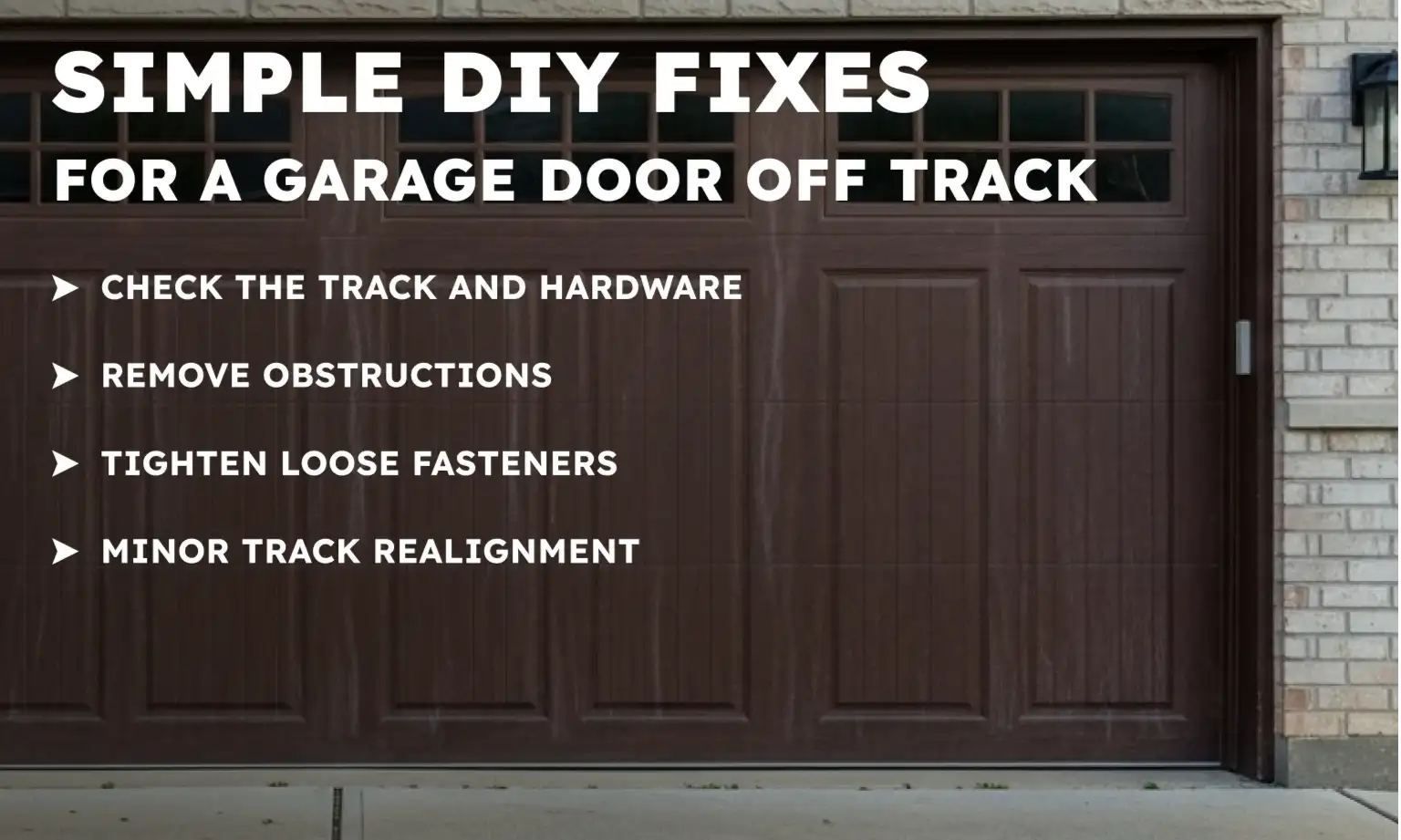
Check the track and hardware.
First, confirm the door is disconnected from the opener and secured. If the door hasn’t popped fully off the track and the issue is minor, check the following:Remove obstructions.
Inspect the vertical and horizontal tracks for debris, dirt, or hardened grease. Wipe clean with a damp rag, then apply a light coat of lithium-based garage door lubricant (avoid general penetrating oils) to the rollers and hinges.Tighten loose fasteners.
Check the brackets where the tracks attach to the wall. Vibration can loosen hardware over time. Use a socket wrench to snug any loose screws or bolts to restore support.Minor track realignment.
Use a level to confirm each vertical track is plumb. If a track is slightly out, gently loosen the mounting screws, nudge the track into position, then retighten firmly.
If a roller has slipped out of the track or the door is badly lopsided, consult our guide on how to get a garage door back on track for detailed, safe steps. Forcing the door or rollers will likely bend tracks or damage panels.

Emergency Garage Door Repair: When to Call a Pro
Knowing your limits is the most important step in resolving any home repair. When dealing with a heavy, moving object like a garage door, internal components such as cables and springs are under hundreds of pounds of tension. These are the primary reasons you should seek professional garage door repair:
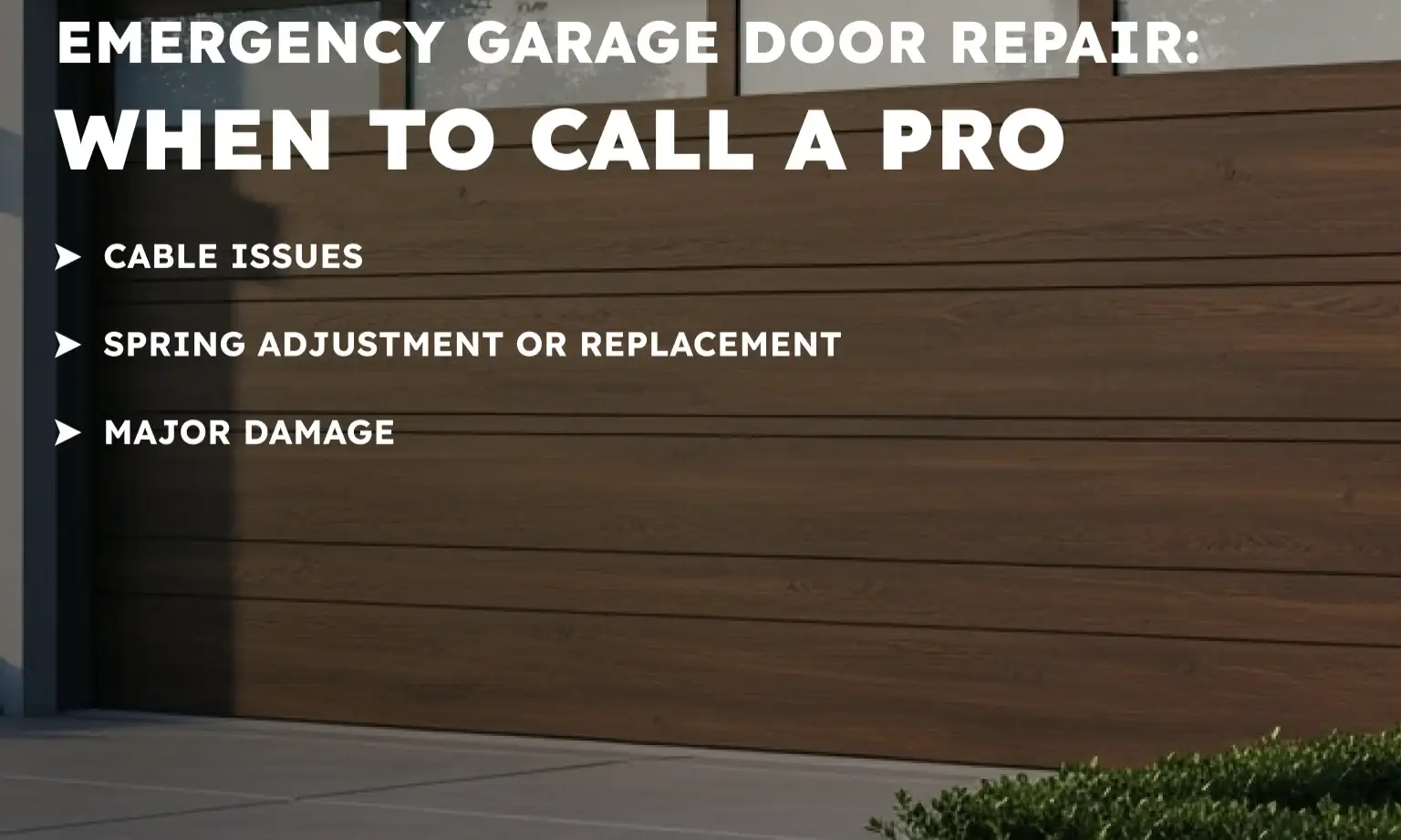
- Cable issues. If a lift cable is frayed, snapped, or has unspooled from the drum, the door is severely unbalanced. Re-spooling requires releasing and resetting system tension with winding bars — specialized work best left to a professional.
- Spring adjustment or replacement. The torsion spring powers the entire system and stores extreme energy, so any mistake can cause serious injury.
- Major damage. Warped panels, a badly bent track system, or a damaged opener trolley all warrant a professional inspection. Pushing through these problems often leads to more costly emergency garage door repair later.
Noticed any of these signs? Don’t delay calling a professional. Technicians at Up & Down Garage Doors have the tools and training to safely diagnose high-tension components, so your door operates smoothly and lasts for the long haul.

Need more information?
Get a free quote
Summing Up
When you’re figuring out how to fix a crooked garage door, acting quickly protects your property and helps prevent injuries. Here’s a quick rule of thumb: match the symptom to the action. Hear a loud bang and the door won’t open? That’s usually a broken garage door spring — get service right away. See the door jerk or stall halfway? That’s usually a basic maintenance issue — inspect the tracks, tighten loose hardware, and lubricate the rollers. Notice it sagging on one side at rest? That’s typically a cable issue or an uneven garage door gap — secure the door and call a professional.
Simple tasks like lubricating and tightening fasteners can be DIY, but high-tension work on springs or cables is not. Never risk your safety by working on components designed to lift hundreds of pounds. If your door is severely tilted, lopsided, or malfunctioning, contact Up & Down Garage Doors for fast, safe, and reliable service.
Frequently Asked Questions
Can I still use my garage door if it’s slightly uneven?
No, you should stop using it immediately. Even a slightly crooked garage door puts extreme stress on the opener motor and the spring-and-cable assembly, quickly driving up repair costs.
What causes the lift cable to come off the drum?
A snapped garage door cable or a cable coming off the drum often occurs when the door hits a solid obstruction (like a garbage can) while closing, or when a broken spring causes a sudden loss of tension in the system.
Is fixing a garage door off track always a professional job?
If the door is significantly off track — meaning multiple rollers are completely out of the vertical tracks — it’s best left to professionals. The fix requires safely relieving tension and precisely realigning components.
How do I know if the problem is my spring or my cable?
If the spring is broken, the opposite-side cable may still look taut until you try to lift the door. If a snapped garage door cable is the issue, you’ll see a slack cable hanging near the drum and the door will feel noticeably heavier on that side.
Can I fix the garage door tension wire myself?
No. What many call the “tension wire” is the lift cable, and it’s under high tension. A pro must safely release system tension, replace or re-spool the cable, and rebalance the door. If you’re wondering how to fix garage door tension wire, the correct and safe answer is to have a trained technician handle it.
How do I straighten a crooked garage door?
If you’re wondering how to straighten a crooked garage door, start by clearing debris and tightening loose brackets. If it remains uneven, the springs and cables likely need rebalancing — a high-tension job for a trained technician.
